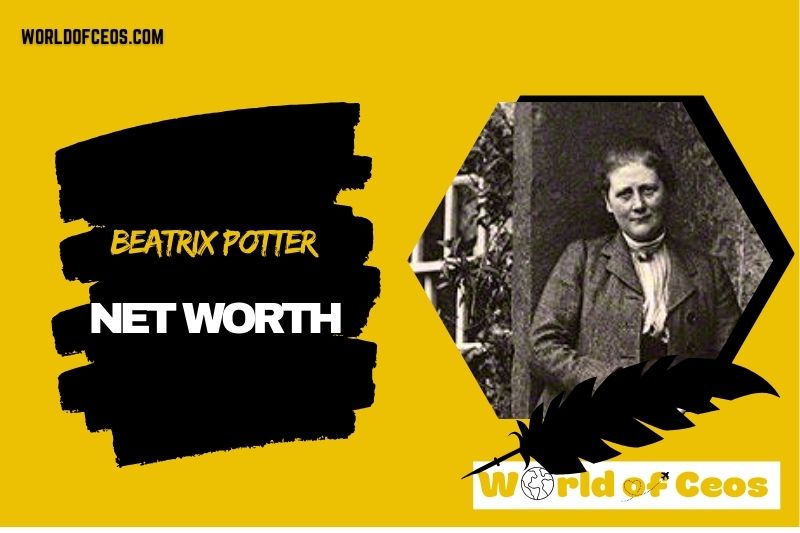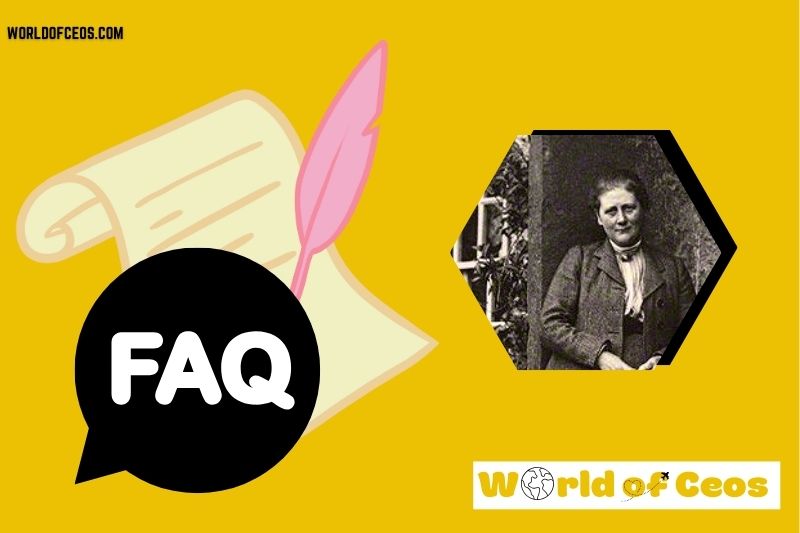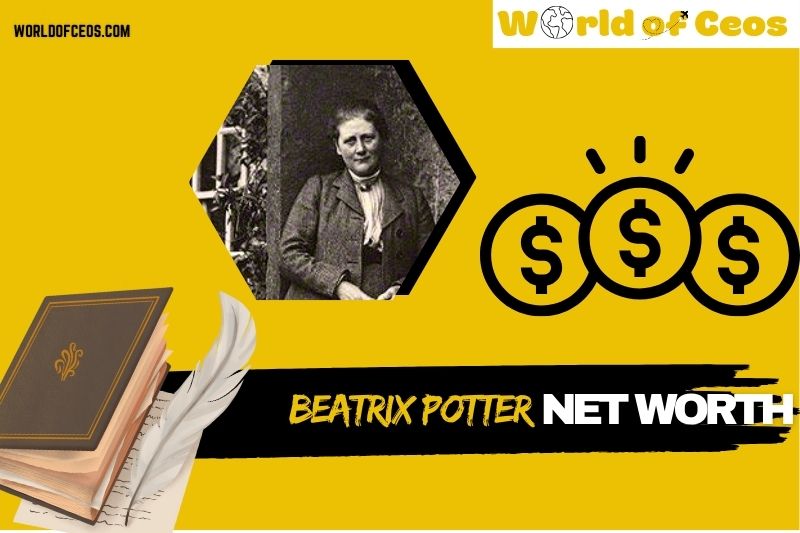As WorldofCeos, I’ll guide you through a detailed look at Beatrix Potter net worth, her achievements in publishing, and how she managed to build a lasting legacy.
Known for The Tale of Peter Rabbit, Potter’s creativity and savvy moves made her not just a children’s author but a remarkable entrepreneur.
From publishing deals to pioneering character merchandising, she revolutionized ways authors could earn. Let’s explore what made her one of the wealthiest figures in children’s literature and conservation.
Quick Facts
| FACT | DETAIL |
|---|---|
| Real Name | Helen Beatrix Potter |
| Popular Name | Beatrix Potter |
| Gender | Female |
| Birth Date | July 28, 1866 |
| Age | 77 (Died: December 22, 1943) |
| Parents | Rupert William Potter, Helen Leech |
| Siblings | Walter Bertram Potter |
| Birthplace | West Brompton, London, England |
| Nationality | English |
| Ethnicity | English (Unitarian background) |
| Education | Privately educated by governesses |
| Marital Status | Married |
| Spouse | William Heelis |
| Children | None |
| Dating | Fiancé, Norman Warne (deceased) |
| Net Worth | Estimated $20 million (2024) |
| Source of Wealth | Book royalties, merchandising |
| Height | N/A |
What is the Net Worth Of Beatrix Potter in 2024?

Beatrix Potter’s net worth is estimated to have been around $20 million, adjusted for inflation.
Her legacy, especially with Peter Rabbit, has brought her continuous global recognition, often compared with other prominent authors.
Notably, she influenced conservation by donating her property to the National Trust, a lasting testament to her financial success and environmental commitment.
Related Authors
- Lewis Carroll
- Hans Christian Andersen
- A. A. Milne
- J.K. Rowling
- E.B. White
- Joel Chandler Harris
- William Heelis (husband)
- Frederick Warne & Co. (publisher)
- Charles McIntosh (mycologist)
For a full breakdown of today’s richest authors, check out our comprehensive list here.
Beatrix Potter Salary and Finance Overview

Early Life and Influences on Wealth
Born into a wealthy family in 1866, Beatrix Potter grew up in a privileged household in West Brompton, London.
Her family encouraged her early interests in nature and the arts, which later led her to pursue a career in children’s literature.
Although she was privately educated, her love for nature was nurtured through long holidays in Scotland and the Lake District. Potter’s unique upbringing allowed her to blend her love of natural science with art, ultimately forming the foundation for her career as an author and illustrator.
Key Milestones in Her Publishing Career
Potter’s first major success came with The Tale of Peter Rabbit, published in 1902. She followed this success with a string of bestselling books, each featuring endearing animal characters that quickly became beloved by children worldwide.
Her stories were not just appealing; they had a universal quality that made them timeless. Potter’s books sold more than 250 million copies globally, a milestone that provided her with a steady income for life.
Revenue Streams Beyond Book Sales
Potter didn’t stop at book sales to grow her wealth. She pioneered the concept of character merchandising, patenting a Peter Rabbit doll in 1903, making it the first licensed character in history.
This move not only boosted her income but also set the stage for character licensing in the literary world, expanding her financial reach beyond traditional book sales. The popularity of Peter Rabbit toys, board games, and other merchandise contributed significantly to her wealth.
Success in Farming and Land Investment
In addition to her literary success, Potter invested in properties in the Lake District, starting with Hill Top Farm in 1905. Her ventures in farming, especially her success with Herdwick sheep breeding, added another source of income.
Potter’s investments in these properties were part of her commitment to conservation, but they also served as long-term financial assets that would benefit her estate and the National Trust.
Her Lasting Financial Legacy through Conservation Efforts
Potter was not only an author but also a conservationist. Upon her death, she donated almost all her property to the National Trust, ensuring the protection of the Lake District landscape.
This significant contribution has left an enduring financial and cultural impact on British conservation efforts.
Her estate, managed by the National Trust, continues to generate revenue from visitors, furthering her legacy as both an artist and a dedicated environmentalist.
Cultural and Financial Impact of Her Work
Potter’s influence on children’s literature has been immense, with her work adapted into films, ballets, and animations. Her unique illustrations and stories were instrumental in shaping the children’s book industry, especially in the UK.
Peter Rabbit and her other characters remain relevant and beloved, maintaining her cultural and financial legacy for future generations.
FAQs about Beatrix Potter

What inspired her to write children’s books?
Her love for animals and nature, as well as her frequent letter-writing to children, inspired her to create stories about animals that lived in the English countryside.
How did she make money from Peter Rabbit?
Potter capitalized on Peter Rabbit’s success by creating and licensing toys, books, and other merchandise, making it the first commercially successful character.
Why did she donate her land to the National Trust?
She was deeply committed to conservation and wanted to protect the Lake District’s natural landscape for future generations.
Did she have a partner before marriage?
Yes, her fiancé Norman Warne passed away before they could marry, leading her to later marry William Heelis.
What were her most popular books?
Her best-known works include The Tale of Peter Rabbit, The Tale of Jemima Puddle-Duck, and The Tale of Squirrel Nutkin.
Where did she live after marriage?
She lived with her husband William Heelis in Near Sawrey, at their home on Castle Cottage in the Lake District.
Did she receive any awards for her work?
Although she did not receive formal literary awards, her work was widely celebrated and influential in children’s literature.
What is the significance of Hill Top Farm?
Hill Top Farm was her first property purchase and later became a key part of her conservation legacy, eventually donated to the National Trust.
Was she a trained scientist?
While she did not receive formal scientific training, she was highly respected for her mycological studies and illustrations of fungi.
How many books did she write?
Beatrix Potter wrote 23 children’s books, along with other unpublished works and illustrations.
Conclusion
Curious for more? I’d love to see your thoughts or questions about Beatrix Potter! Drop a comment, share this article, or explore more insights on WorldofCeos.

